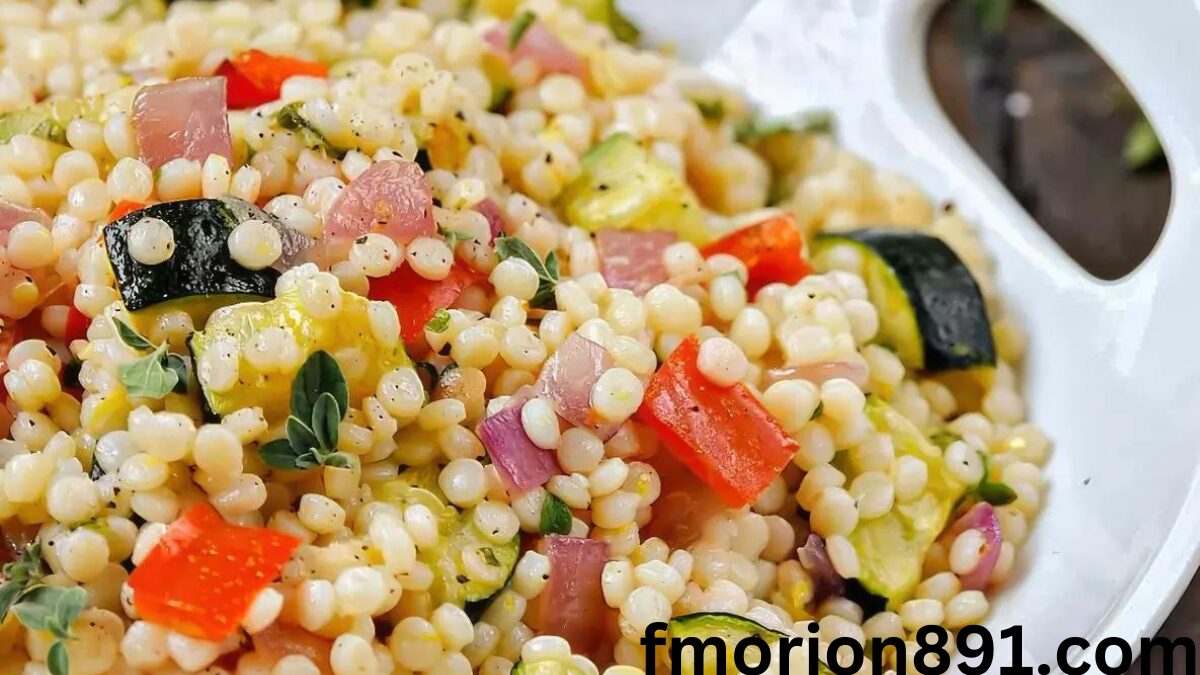Couscous is a versatile and nutritious staple that has been enjoyed for centuries across various cultures. Originating from North Africa, this dish is made from steamed granules of wheat and is a popular choice for a side dish or main course. This article provides a comprehensive guide on preparing original couscous, exploring its numerous health benefits, and offering tips to enhance its flavor and versatility.
I. Ingredients
For this original couscous recipe, you will need:
- 250 g couscous
- 500 ml vegetable broth or water
- 1 tablespoon olive oil
- 1 teaspoon salt
- 1/2 teaspoon black pepper
- 1 small onion, chopped
- 2 garlic cloves, minced
- 1 red bell pepper, chopped
- 1 small zucchini, chopped
- 1 small tomato, chopped
- 1/4 cup sliced, toasted almonds
- Fresh parsley, chopped (for garnish)
II. Preparation Method
1. Prepare the Liquid
Begin by boiling the vegetable broth or water in a saucepan. The liquid should be hot when added to the couscous, ensuring it cooks properly and absorbs all the flavors.
2. Prepare the Couscous
In a large bowl, combine the couscous with olive oil, salt, and black pepper. Mix thoroughly to ensure that the couscous granules are evenly coated with the oil and seasonings.
3. Steam the Couscous
Pour the hot vegetable broth or water over the seasoned couscous. Stir to combine, then cover the bowl with a lid or plastic wrap. Let the couscous steam for about 5 minutes. This allows the grains to absorb the liquid and become fluffy.
4. Cook the Vegetables
While the couscous is steaming, heat an additional tablespoon of olive oil in a skillet over medium heat. Add the chopped onion and sauté until it becomes soft and translucent, about 5 minutes.
Add the minced garlic, red bell pepper, zucchini, and tomato to the skillet. Cook the vegetables for 5-7 minutes, or until they are tender but still vibrant. This step adds depth and flavor to the couscous.
5. Combine and Serve
Fluff the couscous with a fork to separate the grains. Gently fold in the sautéed vegetables and toasted almonds. The nuts add a delightful crunch and nutty flavor to the dish.
Garnish with fresh chopped parsley before serving. This not only enhances the presentation but also adds a fresh, herbal note to the dish.
III. Benefits of Couscous
Couscous is not only delicious but also packed with health benefits. Here are some key advantages:
1. Nutrient-Rich
Couscous is a good source of dietary fiber, which aids in digestion and helps maintain a feeling of fullness. It also provides essential nutrients such as protein, iron, magnesium, and potassium. These minerals are vital for various bodily functions, including muscle health, bone density, and overall energy levels.
2. Low in Fat and Calories
Couscous is relatively low in fat and calories compared to many other grains. This makes it an excellent choice for those who are looking to manage their weight or adhere to a low-calorie diet.
3. Versatile and Easy to Prepare
Couscous is incredibly versatile and can be prepared in a variety of ways. It can be served as a side dish, incorporated into salads, or used as a base for main courses. Its neutral flavor allows it to complement a wide range of ingredients and cuisines.
IV. Tips and Variations
1. Choosing the Liquid
You can use any type of vegetable broth to add flavor to the couscous. If vegetable broth is not available, you can substitute with hot salted water. For a richer flavor, consider using chicken broth or adding a splash of white wine.
2. Adding More Vegetables
Feel free to incorporate additional vegetables into the recipe. Mushrooms, carrots, or sweet potatoes are great options that add both flavor and nutrition. Adjust the cooking time as needed to ensure all vegetables are tender.
3. Experimenting with Nuts and Seeds
Instead of toasted almonds, you can use other nuts or seeds. Cashews, walnuts, or pine nuts can provide different textures and flavors. For a nut-free option, try using sunflower seeds or pumpkin seeds.
4. Serving Suggestions
Couscous can be served as a side dish alongside grilled meats, fish, or roasted vegetables. It also works well as a main course when combined with legumes, such as chickpeas or lentils. Additionally, couscous can be used in salads, adding a hearty component to leafy greens and fresh vegetables.
FAQs
1. What is couscous made from?
Couscous is made from steamed granules of wheat. It is a type of pasta that has been a staple in North African cuisine for centuries.
2. How do you prepare couscous?
To prepare couscous, boil water or broth, then pour it over the couscous and let it steam. Fluff with a fork and add your choice of vegetables or nuts for added flavor.
3. What are the health benefits of couscous?
Couscous is high in fiber, protein, and essential minerals like iron and magnesium. It is low in fat and calories, making it a nutritious option for maintaining a healthy diet.
4. Can you substitute water for broth in couscous?
Yes, you can use water instead of broth. However, using broth adds extra flavor to the couscous. If using water, consider adding extra seasonings for flavor.
5. What vegetables can be added to couscous?
You can add a variety of vegetables to couscous, such as bell peppers, zucchini, tomatoes, carrots, and mushrooms. These enhance the flavor and nutritional value of the dish.
YOU MAY ALSO LIKE
Buší and Fufu: A Taste of Congolese Tradition
V. Conclusion
Couscous is a versatile and nutritious addition to any meal. Its ease of preparation and health benefits make it an ideal choice for both everyday dining and special occasions. By following this original recipe and incorporating your favorite ingredients, you can enjoy a delicious and satisfying dish that enhances your culinary repertoire.










